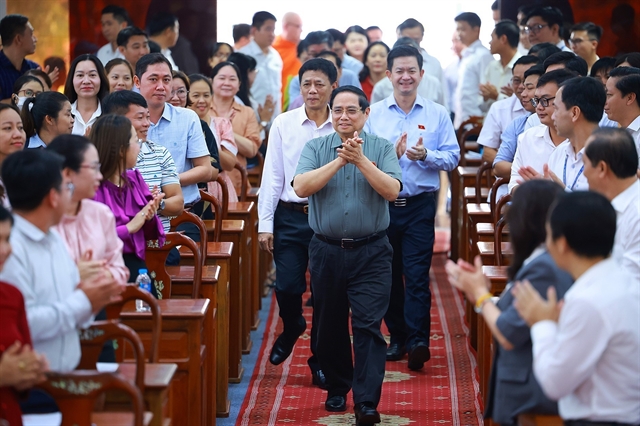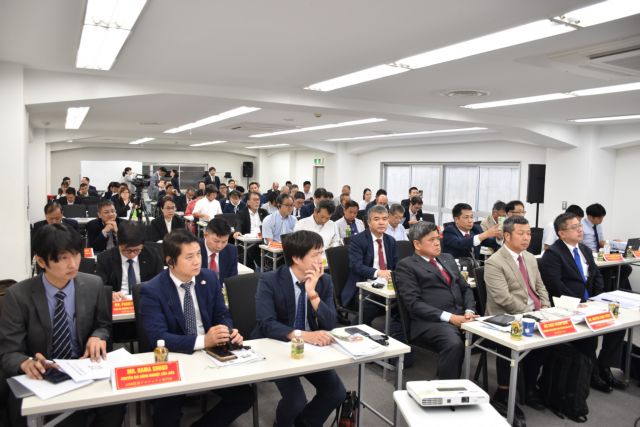 Society
Society
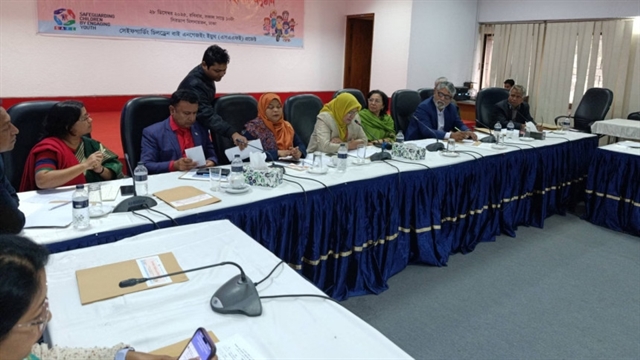
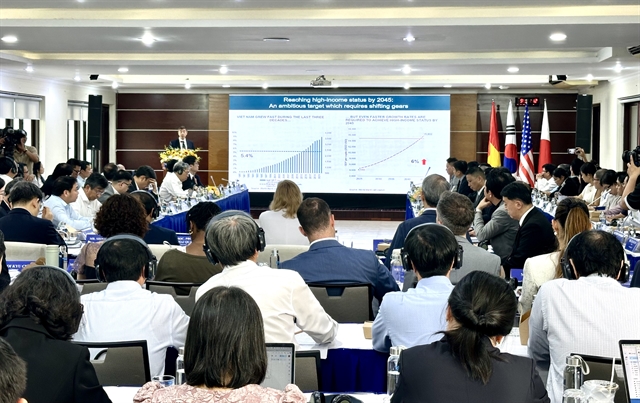 |
| The university-industry dialogue on collaboration for high-skilled workforce development was held in HCM City on August 27. — VNS Photo Nguyễn Diệp |
HCM CITY — Cooperation with businesses in training and research activities has helped universities to improve their training programmes and meet the recruitment needs of businesses, Vũ Hải Quân, chancellor of Việt Nam National University - HCM City (VNU-HCM) said at a dialogue held in HCM City on Tuesday (August 27).
The university-industry dialogue on collaboration for high-skilled workforce development was co-organised by VNU-HCM, the US Consulate General in HCM City, the Consulate General of Japan in HCM City, and the Consulate General of the Republic of Korea in HCM City.
Speaking at the event, VNU-HCM chancellor Vũ Hải Quân said the university identifies cooperation with businesses as a fulcrum for research results to be applied in practice.
The cooperation is based on mutual benefits and a win-win partnership.
In March, a memorandum of understanding (MoU) was signed between VNU-HCM and the US-based electronic design automation (EDA) company Synopsys to collaborate in developing high-quality human resources for the semiconductor industry, especially in the field of IC design.
The two sides will collaborate to establish the VNUHCM Semiconductor Research Institute (VSRI), which will become a place providing equipment for training and research for universities and startups, and a centre for connecting and developing cooperation in the field of semiconductors among VNU-HCM and businesses, institutes and universities at home and abroad.
According to statistics from Synopsys, more than 53 per cent of engineers working for IC design businesses have graduated from VNU-HCM’s member universities.
VNU-HCM is training about 6,000 students in majors related to semiconductor technology.
In the period of 2021-30, with a vision to 2045, VNU-HCMC identifies three key areas of training and research, including semiconductor technology, biotechnology and artificial intelligence.
The university has eight member universities and one member research institute, and boasts the country’s largest training platform of about 100,000 undergraduates and postgraduates.
It currently leads the country in the number of internationally accredited training programmes and international publications.
By 2030, it targets to train about 1,500 engineers and 500 master's degree students in integrated circuit (IC) design; and train and grant industrial and international certifications in IC design to around 15,000 engineers.
It will also train 10,000 engineers, 3,200 master’s degree and 600 doctoral degree students in biotechnology and related fields; and 20,000 engineers, 2,000 master’s degree, 300 doctoral degree students in IT and AI.
It aims to be among the leading higher education institutions in Asia by 2045.
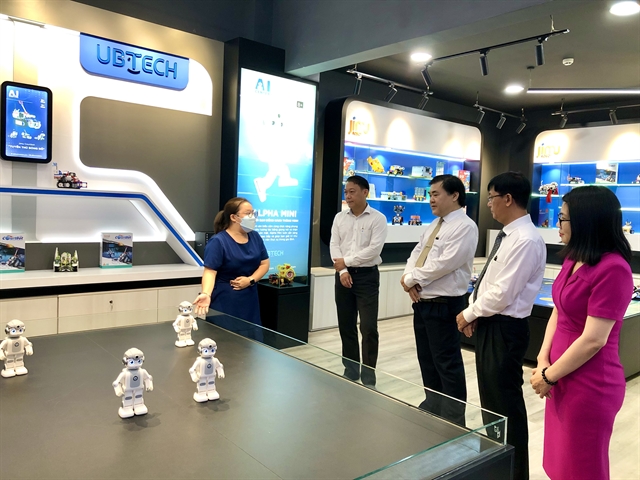 |
| AI-based products displayed at the Artificial Intelligence Education and Training Centre of Việt Nam National University-HCM City. — VNS Photo Nguyễn Diệp |
According to the World Bank, the country has not fully unlocked its potential and is mainly engaging in the low value-add step of midstream production in the E&E global value chain (GVC).
Its supply of a skilled, innovative workforce is increasing slowly, but falls short of demand by tech-intensive industries.
Andrea Coppola, World Bank’s lead economist and programme leader for Việt Nam, Cambodia and Laos, said Việt Nam’s ambition of becoming a high-income economy by 2045 will depend on its ability to transition its role in the global economy towards higher-value manufacturing and services.
“Moving up the value chain in tech-intensive industries demands more workers with tertiary education, sophisticated skills, and STEM degrees,” he said.
To build a strong supply of highly educated engineers and scientists, the country needs sustained commitment for a significant period, as building this workforce requires a substantial pipeline of undergraduate, graduate and postgraduate education and practical training, he said.
To improve training for skilled technicians, it needs to create upskilling programmes that meet industry’s needs with standardised programmes, including transparent metrics of performance.
To expand the pipeline and address affordability, it needs to reduce opportunity costs of training in science and technology through improving industry awareness, favourable loans and incentives.
It also needs to strengthen public support to incentivize reskilling and upskilling programmes for employees, he said.
Đỗ Đức Dũng, head of S/W Solution Group at Samsung R&D Centre Vietnam (SRV), said since its establishment in 2012, the SRV’s work has been consistently expanding.
SRV aims to develop the best global products with excellent Vietnamese engineers.
"Samsung believes that efforts to discover and support excellent students will grow in both Việt Nam’s IT and Samsung’s growth,” he said.
In 2012, Samsung started its university cooperation programme because the company needed many experienced S/W engineers but there was not enough talent in the market.
The company decided on a long-term strategy of providing students the knowledge and skill sets that companies need, he said.
Now, it has a strong pipeline from which it can hire enough engineers.
“We call it the Samsung talent programme,” he said.
Samsung’s talent cultivation strategy provides university students with the opportunity to learn the skills Samsung and the IT industry need, shares the company's know-how generously with future talents, and supports an environment where they can learn skills. — VNS

